“Urethane casting, or sometimes vacuum casting, is a low-volume casting process widely favored for its adaptability. Its use is vital in everything from medical devices to automotive and aircraft interior components.”

The vacuum casting process involves shaping various resins without air, including urethane, epoxy, or silicone, into the desired shape. A pump or similar mechanism removes all the air from mold or die during the process. Typically, vacuum casting is used for urethane resins, that’s why it is also known as urethane casting. It offers numerous advantages over traditional manufacturing methods, including lower costs, faster production times, and the ability to produce complex parts with intricate details.
This article comprehensively overviews the vacuum casting or urethane process, other materials, advantages, and applications.
Vacuum Casting and Urethane Casting: Are They Same?
Let’s understand this way: all the urethane castings are vacuum casting processes, but not all vacuum casting can be urethane casting. The vacuum casting method can also process other materials besides the urethane casting. However, most vacuum casting projects use urethane to form strong parts with minimal air entrapment, minimizing defects like air bubbles and voids.
Furthermore, urethane vacuum casting can produce foam structures using specific urethane formulations that expand into foam, creating lightweight, durable components.
The Fundamentals of Vacuum Casting

Vacuum casting mechanism
Vacuum casting is designed to produce high-precision and high-quality parts in small to medium quantities. This process is widely used across various industries, including automotive, medical, and consumer electronics, due to its ability to produce parts with intricate details, complex geometries, and superior surface finishes.
Mechanism of Vacuum Casting
The mechanism of vacuum casting involves several interconnected processes and stages. Each step, from preparing the master model to demolding the final part, plays a critical role in ensuring the success of the overall process. Let’s delve deeper into each stage of the mechanism of vacuum casting.
1. Master Model Creation
The first step in the vacuum casting process is to create a master model or pattern. This master model is typically produced using additive manufacturing methods such as Stereolithography (SLA) or Selective Laser Sintering (SLS). It should be made with high precision and a smooth surface finish as it will be used to create the silicone mold.
2. Mold Making
The master model is then used to create a silicone mold. The model is placed in a mold box, and liquid silicone rubber is poured over it. Once the silicone rubber covers the master model, the mold box is placed in a vacuum chamber to remove any air bubbles from the silicone. After curing, the silicone mold is cut open, and the master model is removed, leaving a cavity that corresponds to the shape of the master model.
3. Casting
The silicone mold is then ready for casting. The mold is placed in the vacuum casting machine, and the casting material, typically a two-component polyurethane resin, is mixed and degassed. The mold cavity is then filled with the casting material under a vacuum to ensure that the material fills all the mold details and that there are no air bubbles in the final part. Depending on the material used, the mold is then closed, and the casting material can cure at room temperature or in a curing oven.
4. Demolding and Finishing
Once the casting material has cured, the mold is opened, and the cast part is removed. The silicone mold can be reused to produce multiple copies of the part. The cast parts may require some post-processing, such as trimming excess material, sanding, painting, or other surface treatments, to achieve the desired finish.
Urethane Casting: How Does it Work?
The urethane liquid material is poured into a silicon mold and cured in a heated oven, which slightly demolds or removes the product or part upon solidification.
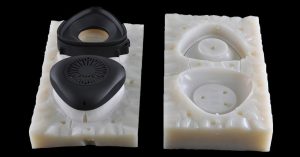
Urethane molding
The urethane casting process is limited to low volumes as the silicon molds have a shorter span cycle and can only mold around 20 parts in one production cycle. After this limit, designers need to dispose of the soft silicon mold. However, the parts produced entail exceptional surface finish, and higher strength, molded from polyurethane casting compared to the injection molding process. Usually, manufacturers rely on urethane casting to create tighter tolerance parts down to +/-.005″. Moreover, the process is presumed to be a bridge between 3D printing and injection molding processes. The product lead time in urethane casting spans from a few days to a week; research shows it’s typically around 3-4 weeks.
In general, the master patterns for molds used for the urethane molding process are designed through speedy and effective CNC machining and 3D printing techniques like Stereolithography, fused deposition modeling, selective laser sintering, and poly jets. This master pattern is embedded in a urethane-filled silicon mold container to make a mold negative. Then, after applying the optimal pressure, vacuum, and temperature of around 40 degrees Celsius, the product gets the desired shape of the mold, which then solidifies, and the part is ejected for post-processing. Metal inserts are sometimes needed for parts requiring tighter tolerances and thin wall patterns.
What are the Vacuum Casting Materials
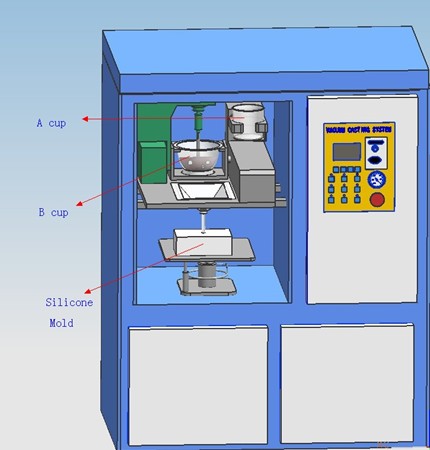
Vacuum casting chamber
The selection of materials is a critical aspect of the vacuum casting process. It impacts not only the final part’s properties but also the casting process’s quality and success. Below, we delve deeper into the most commonly used materials in vacuum casting:
- Rigid Clear Polyurethane (PU) Resins
Generally, urethane casting resin is compatible with two thermoset urethane casting resins: elastomeric polyurethane and rigid clear polyurethane. The rigid PU resins offer a premium-quality gloss and matte finish. Moreover, parts cast through these thermosets provide exceptional durability and longevity.
Table: Technical aspects of rigid polyurethane
| Material Type | Rigidity | Technical Detail | Properties |
| Rigid-clear polyurethane | Shore D 80 | Poly-Optic 1410 or equivalent | High transparency, gloss, clear resin |
2. Elastomeric Polyurethane
Elastomeric polyurethane thermosets share characteristics with rubbers and are often characterized by shore A urethane casting material’s group. They offer a high elongation percentage to break, flexibility, and impact resistance. Examples include cable connectors, overmolds, buttons, skin grips, and high-strength kits for defense sectors.
Table: Technical aspects of elastomeric polyurethane
| Material Type | Rigidity | Technical Detail | Properties |
| Elastomeric polyurethane | Shore A 25-95 | F-130 to F-190 or equivalent | High elongation break and flexibility |
3. Silicone Rubber
Silicone rubber is another popular material choice for vacuum casting. It is known for its excellent flexibility and chemical and temperature resistance. These properties make it ideal for producing soft, flexible parts such as seals, gaskets, and over-molds. Silicone rubber is also commonly used to produce molds for vacuum casting, as it can accurately replicate the surface texture of the master model and produce parts with high surface quality.
4. Epoxy Resins
Epoxy resins are characterized by their excellent mechanical properties, chemical resistance, and high-temperature resistance. These properties make them suitable for producing parts that require high strength and rigidity. For example, epoxy resins are often used to produce structural components and parts that will be exposed to harsh environments.
5. Wax
Wax is a specialized material used in vacuum casting to produce investment casting patterns. The wax patterns are used to create ceramic molds for metal casting. The wax is melted out of the mold before the metal is poured in, hence the term ‘lost wax’ casting. This process allows for producing metal parts with complex geometries and high surface quality.
It is important to note that the properties of the final part depend not only on the material selected but also on the processing parameters used during the casting process. Factors such as the casting process’s temperature and pressure, the material’s cure time, and the mold’s design all impact the final part’s properties. Therefore, optimizing the casting process for each material and application is essential to produce parts with the desired properties.
Factors to Onsidert for Vacuum or Urethane Casting Mold Design
Mold design is a crucial aspect of the casting process, as it directly affects the quality of the final cast parts. A well-designed mold ensures the parts have a smooth surface finish, accurate dimensions, and intricate details. Here are some essential considerations for mold design in vacuum casting:
1. Creating Pattern or Master Model
It should be made with high precision and a smooth surface finish to avoid transferring defects to the silicone mold and the cast parts. Commonly made using Stereolithography (SLA) or Selective Laser Sintering (SLS).
2. Mold Material
Silicone rubber is commonly used for its high flexibility, chemical resistance, and temperature resistance. It is suitable for casting a wide range of materials and can be reused to produce multiple copies of the part.
3. Mold Cavity
The hollow space in the mold corresponds to the final part’s shape. It should be carefully designed to ensure complete filling without air bubbles. Consider the flow of the casting material and design the cavity with smooth, rounded corners.
4. Parting Line
The line along which the mold is divided into two halves. It should be carefully located to ease mold making and demolding and minimize its appearance on the final part. Ideally, it should be along flat or gently curved surfaces.
5. Gates and Vents
Gates are channels for the casting material to enter the mold cavity, and vents are channels for air expulsion during casting. Their size and location should be optimized to facilitate material flow and air expulsion.
6. Shrinkage Consideration
The casting material typically shrinks as it cures. To compensate for this shrinkage, the mold cavity should be slightly larger than the final part.
7. Mold Release
A mold release agent should be applied to the mold surface before casting to facilitate demolding and prolong the mold’s life.
8. Mold Support
The mold should be properly supported during casting to retain its shape and avoid deformation under the casting material’s weight.
9.Tolerances
Tolerances of the master model, the mold, and the casting material should be considered in the mold design to ensure the final part meets the desired specifications.
Try Prolean Now!
What Are the Advantages of Vacuum Casting?
Vacuum casting offers many advantages, making it an ideal choice for prototyping and low-volume production. Here are some of the key benefits of this method:
- High-Quality Surface Finish
One of the significant advantages of vacuum casting is the high-quality surface finish of the parts. Using a silicone mold allows for the accurate replication of the surface texture of the master model, resulting in parts with a smooth and detailed surface finish. This eliminates the need for post-processing steps such as sanding and polishing, reducing production time and cost.
- Quick Turnaround Time
Vacuum casting is a relatively fast process, especially when compared to other manufacturing methods such as injection molding or CNC machining. The silicone molds can be produced quickly, and multiple parts can be cast from a single mold. This makes it possible to produce small quantities of parts in a short amount of time, making vacuum casting an ideal choice for prototyping and low-volume production.
- Cost-Effective for Small Quantities
The cost of producing a silicone mold for vacuum casting is relatively low compared to producing metal or hard plastic molds for other manufacturing methods. Additionally, the same mold can be used to produce multiple copies of the part, reducing the cost per part. This makes vacuum casting a cost-effective option for producing small quantities of parts.
- Ability to Produce Complex Geometries
Vacuum casting allows for producing parts with complex geometries and intricate details. The liquid casting material can fill intricate details in the mold cavity, producing parts with complex shapes and delicate features. This makes vacuum casting suitable for producing parts with undercuts, thin walls, and intricate details.
- Material Versatility
Various materials can be used in the vacuum casting process, from soft and flexible rubber to hard and rigid plastic. This material versatility makes it possible to produce parts with various properties and characteristics, making vacuum casting suitable for a wide range of applications.
- Accurate and Consistent Parts
The vacuum casting process produces parts with high dimensional accuracy and consistency. Using a vacuum helps remove air bubbles from the casting material, resulting in parts with uniform density and consistent mechanical properties. This makes vacuum casting suitable for producing functional prototypes and parts for end-use applications.
- Ability to Produce Over-molded Parts
Vacuum casting allows for the production of over-molded parts, where a rigid plastic part is over-molded with a soft rubber material. This is useful for producing parts with soft-touch surfaces, seals, and gaskets. The process involves casting the rigid plastic part, placing it in a second mold, and casting the soft rubber material over it.
Applications of Vacuum Casting
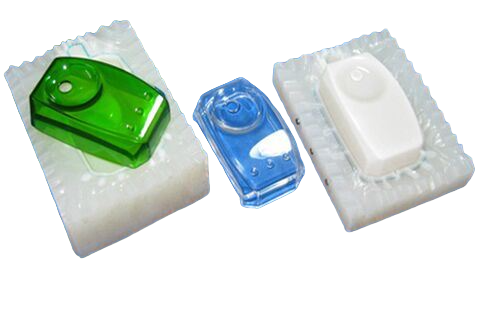
Vacuum cast parts
Vacuum casting is a versatile manufacturing process that is used in a wide range of industries and applications. Here are some of the common applications of vacuum casting:
Table: Vacuum casting applications
| Application | Description | Benefits |
|---|---|---|
| Prototyping | Used for producing functional prototypes with high detail and smooth surface finish. | Ideal for producing prototypes resembling final products and allowing for testing and validation. |
| Low-Volume Production | Suitable for low-volume production of parts due to the relatively low cost of silicone molds and its reusability . | Cost-effective option for producing small quantities of parts. |
| Over-molded Parts | Used for producing over-molded parts where a rigid plastic part is over-molded with a soft rubber material. | Like parts with soft-touch surfaces, seals, and gaskets. |
| Medical Devices | Used in producing medical devices and components with high detail, accuracy, and medical-grade materials. | Suitable for producing medical devices with complex geometries and tight tolerances. |
| Automotive Components | Used for producing interior trim parts, dashboards, and functional components with high detail and smooth finish. | Suitable for producing aesthetic and functional components. |
| Consumer Products | Consumer products like electronic devices, household appliances, and sporting goods. | Suitable for producing aesthetic and functional components. |
| Aerospace Components | Used for producing interior trim parts, functional components, and prototypes with high detail and accuracy. | Parts with tight tolerances and need to withstand harsh environments. |
Related to: Vacuum Casting Services China: Shape Your Manufacturing
Urethane Casting Application Examples
Polyurethane casting has various applications across manufacturing industries, such as medical parts, housing and enclosures, sporting equipment, and functional prototypes for the automotive and aerospace sectors.
Medical Industry
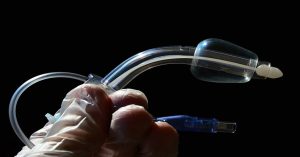
Medical polyurethane Pipe
Urethane casting primarily uses medical-grade plastics to form non-toxic devices for patients’ safety. These products adhere to strict safety standards and comply with food-safe quality control standards using food-grade biocompatible materials. Some examples include disposable syringes and enclosures of implantable catheters.
Structural Equipments
Polyurethane casting is usually practicable for fabricating lightweight supporting equipment, including vehicle wheels, gym dumbbells, underwater components, and helmet padding.
Rapid Prototyping Development
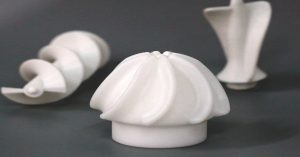
Urethane casting is a rapid prototyping method considered appropriate for creating functional prototypes, proof-of-concept models, testing prototypes, and mechanically engineered designs. Furthermore, urethane molding helps make parts with lengths up to 30 inches.
Small Scale Production Volumes
Urethane molding is a popular choice for producing parts at small units of up to 20 – 50 shots because the mold silicon needs to be disposed of occasionally after each unit. So, its employment on large volumes of imprints is a higher expense to the overall scale economy.
Enclosures & Housing Equipment
Polyurethane casting is heavily used to fabricate enclosures for various industries. Its role is widespread, from consumer electronics to medical devices. Moreover, urethane casting can be combined with the over-molding process to create highly sterilized electrical components encased with rubberized shells to protect the surface and enhance longevity.
Urethane Casting Vs. 3D Printing
Urethane molding and 3D printing techniques are widespread across manufacturing industries due to their ability to produce intricate parts. However, 3D printing is a versatile process. It accommodates various manufactured parts from a broader range of material options. In addition to part complexity, it helps create finer, detailed functional prototypes using stereolithography and fused deposition techniques.
On the other hand, urethane casting also helps to produce 3D printing master patterns. Although the accuracy level is slightly minimal for 3D printing, it can be more beneficial for applications requiring multiple copies of the same products. Moreover, 3D printing is limited to a few color variants, while vacuum casting or urethane molding allows the addition of pigments and color during operation.
Urethane Casting Vs. Injection Molding
However, urethane casting and injection molding are similar but have few distinctions. The one common difference is the mold material. For example, injection molding usually uses costly steel or carbide molds to inject end-use parts or products. Inversely, urethane molds are inexpensive and made of soft silicon materials.
Moreover, injection molding notably benefits large-volume production runs for high-strength-requiring parts. Meanwhile, urethane molding is economical for small-scale batches that produce parts.
Urethane Casting Vs. CNC Machining
CNC machining has multiple benefits over the urethane casting process. It is more versatile and offers various materials, from engineered-grade thermoplastics to high-strength metals, composites, and elastomers. This makes it accurate and precise for fabricating tight-dimension parts and prototypes. Urethane casting, in contrast, is limited to a few materials. Additionally, CNC machining parts manufacturing imprints additional costs on budget, while urethane casting is a faster and more affordable technique, from shaping prototypes to mass-produced parts.
Furthermore, urethane molding is a straightforward process as it generally does not require any tooling for product development. CNC machining is more complicated as parts sometimes need to be lathed, drilled, milled, and routed for intended use applications, thus acquiring additional costs on the project.
Vacuum Casting Services at Prolean
Prolean offers a one-stop solution to meet all your casting project requirements. We have gained the reputation of the best Vacuum Casting Services by providing high-quality and affordable urethane casting. Our technical team is highly dedicated to bringing excellence to your urethane casting product development projects.
Our facility offers our valued customers a wide material range from thermoplastics to various composites. Whether you need to develop rapid prototypes for small-scale to large runs on-demand, we meet to fit your needs without compromising on high standards and at an affordable budget to your range. Trust prolean for help, and get an instant online quote.
Conclusion
Urethane casting or vacuum casting has become an efficient and affordable method for commencing small-scale projects. The upfront costs per part are relatively small compared to traditional machining and molding techniques. Furthermore, it helps to create parts or products that possess high dimensional stability, matte, gloss, and the ability to resist chemicals and aliphatic-based oils. Moreover, it’s flexible from a low shore durometer (20 hardness/ rigidity) to several 100s durometer hardness materials.
However, a few disadvantages limit its use in terms of mold changeability and short-run production. Despite these, urethane casting is immensely employed for various rapid typing developments and has gained significance across several industries, from medical to auto car parts fabrication.
FAQs
Q1. What is vacuum casting?
Vacuum casting is a method used to create high-precision and high-quality parts in various materials. The process involves creating a silicone mold around a master pattern, pouring the casting material into the mold, and then curing the material in a vacuum chamber to remove air bubbles.
Q2. What materials can be used in vacuum casting?
Polyurethane resins, silicone rubber, and epoxy resins are commonly used materials in vacuum casting.
Q3. What is the shrinkage rate in the urethane casting process?
When progressing from liquid resins to solids, the shrinkage rate of urethane casting during mold creation is usually around 0.15%.
Q4. What surface finishing options can provide urethane casting resin?
These resins typically offer exceptional moldability and comprehensive surface finishing options, including frosted/matte, crystal transparency, medium to high gloss shades, and colored textured surfaces.
Q5. Is polyurethane plastic or not?
Generally speaking, thermoset materials are not considered plastics. Instead, long-chain polymers yield thermoset polyurethanes, which are synthetic elastomeric resins rather than plastic resins. A thermoset is an organic compound made of carbamate links.
Q6. Is urethane or urethane casting resin expensive?
The costing criteria of urethane casting typically depend upon parts volume, design complexity, etc. It usually costs between a few 100s to 1000s $ from place to place.
Q7. What are the applications of vacuum casting?
Vacuum casting is commonly used for rapid prototyping, medical devices, automotive components, and consumer electronics.

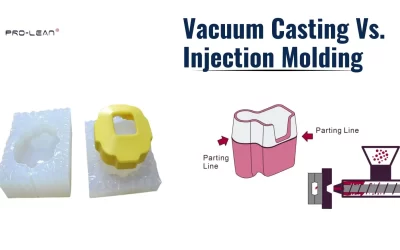
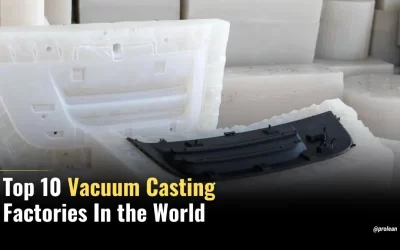
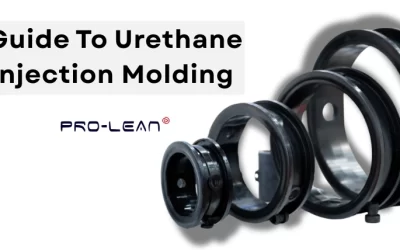
0 Comments